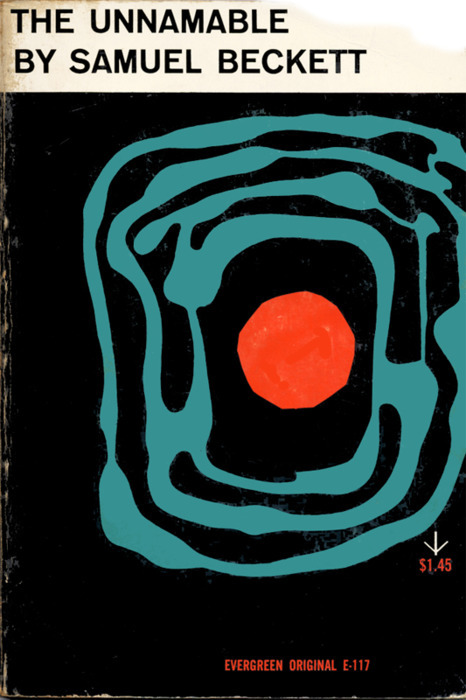Barney Rosset and the history of Grove Press

Grove cover image by Roy Kuhlman
After the war, Rosset returned to Chicago, joined the Communist Party, and hooked up with a Parker schoolmate, the painter Joan Mitchell, a key figure in Grove’s early history. Rosset followed Mitchell first to New York, where she introduced him to her circle of friends, the Abstract Expressionist painters who were in the process of stealing the idea of modern art from Paris, and then to France, where the two would marry. According to Rosset, witnessing Mitchell’s development as a painter transformed his understanding of the visual arts: “If I have any taste today, or any emotions about art…it’s all thanks to Joan.” When they returned to New York in 1951, they began to drift apart, but remained friendly; it was Mitchell who heard about Grove and encouraged Rosset to purchase it. In that same year, Roy Kuhlman, a painter on whom Mitchell had been an influence, came to the Grove offices to show Rosset some ideas for book cover design. Rosset was initially uninterested in his portfolio, but as Kuhlman was leaving he accidentally dropped a 12” by 12” piece of abstract art he intended to pitch as a record cover to Ahmet Ertegun. Rosset immediately saw what he wanted.
Steven Brower and John Gall have called the collaboration between Rosset and Kuhlman, which lasted for twenty years, “a marriage of imagery and the written word that had not been seen before, or, perhaps, since.” Kuhlman was one of the first book designers to incorporate abstract expressionism into cover art, and his signature style, making ample use of “negative space,” provided a distinct look for Grove throughout the fifties and sixties.
At one point in our second interview, Rosset made a sweeping gesture with his hand and said, “All of Grove Press’s life was within about four blocks of here.” At first, he ran the company out of his apartment at 59 West 9th street. In 1953, he moved to a small suite of offices above an underwear store at 795 Broadway, across the street from Grace Church. By that time, the Abstract Expressionists had made the Museum of Modern Art into a major player in the international art scene, the Living Theater was radicalizing American drama, and the Beats were developing their “new vision” for an indigenous avant-garde. The American Century had arrived, and New York City was its capital. If Rosset himself is a product of pre-war Chicago, Grove Press could only have happened in post-war New York.
It could also only have happened in the fifties. Rosset purchased Grove at a transitional moment in the paperback revolution that was democratizing reading in the United States. Piggybacking on the distribution networks of mass-market magazines, most paperback books in the forties were reprints either of bestselling hardcovers or of out-of-copyright classics. Initially, Rosset pursued this route, developing his title list by reprinting classic texts such as Matthew Lewis’s The Monk and Henry James’s The Golden Bowl. But soon, inspired by vanguard presses like James Laughlin’s New Directions and Jason Epstein’s groundbreaking Doubleday imprint Anchor Books, Grove began publishing original avant-garde texts as inexpensive “quality” paperbacks. Following the example of Epstein, who promoted his imprint with the Anchor Review, Rosset launched the Evergreen Review in 1957, and in 1958 the “Evergreen Originals” imprint. Grove operated on a shoestring, paid small advances, and was almost always on the verge of going under. (During our second interview, Rosset claimed, “We only made money for a couple of years,” and then, after a pause, concluded, “We never made money really.” His current modest circumstances — one associate told me Astrid had sold her house to keep them afloat — confirm Rosset’s claims.)
